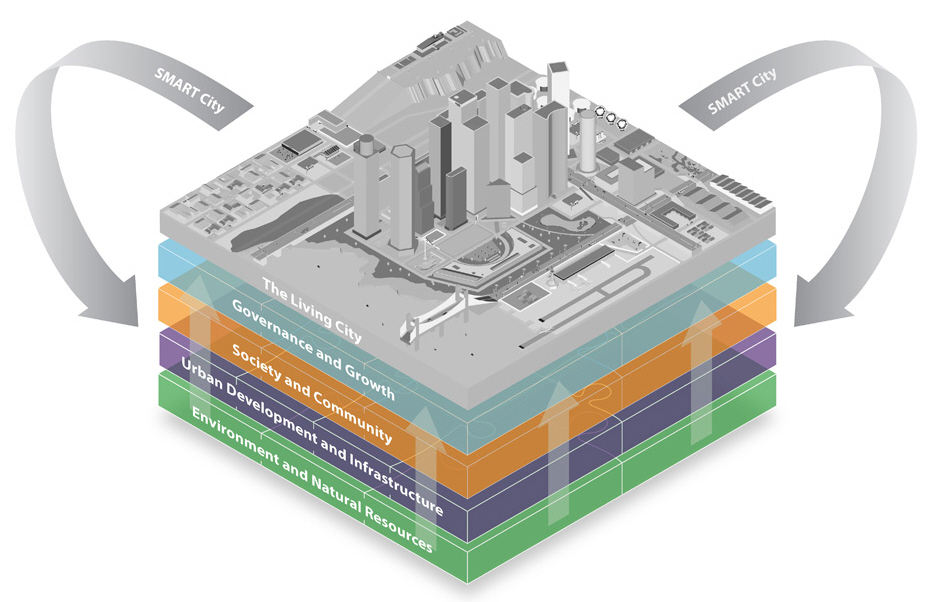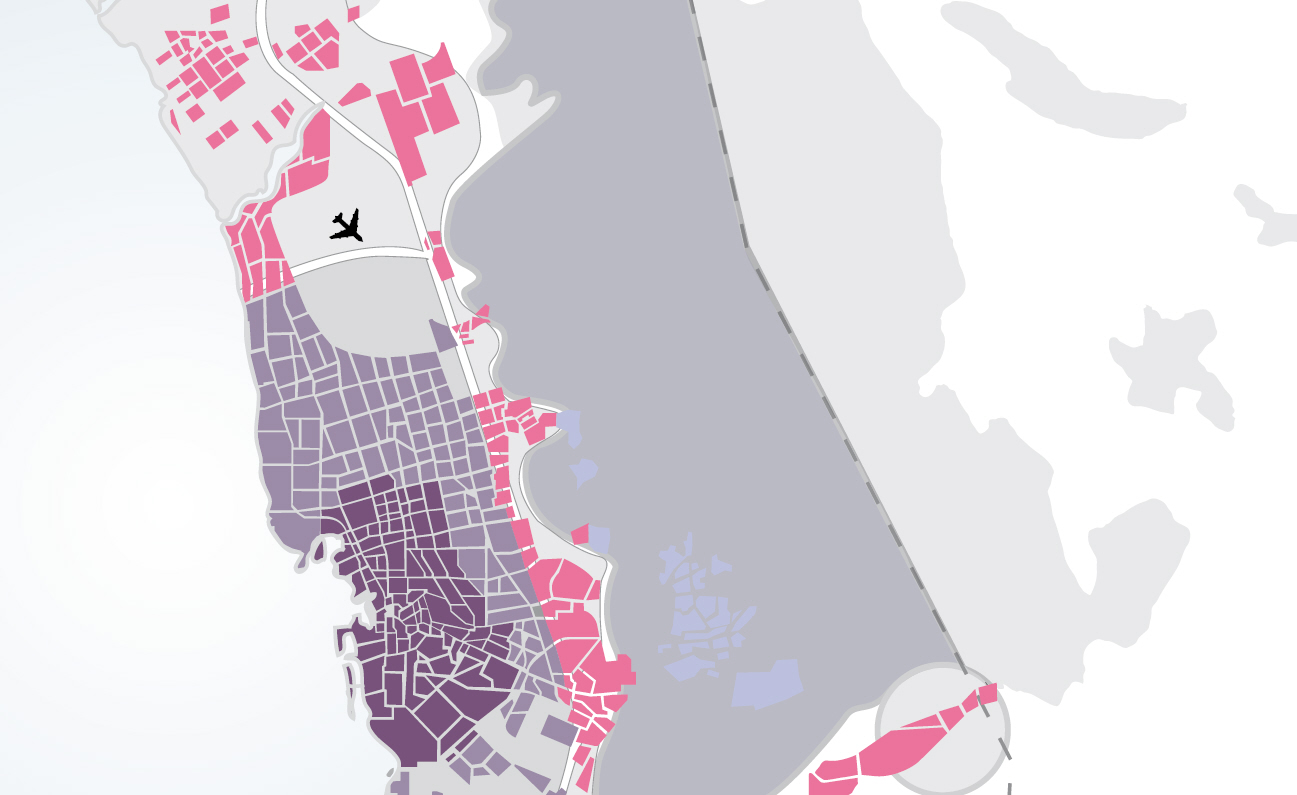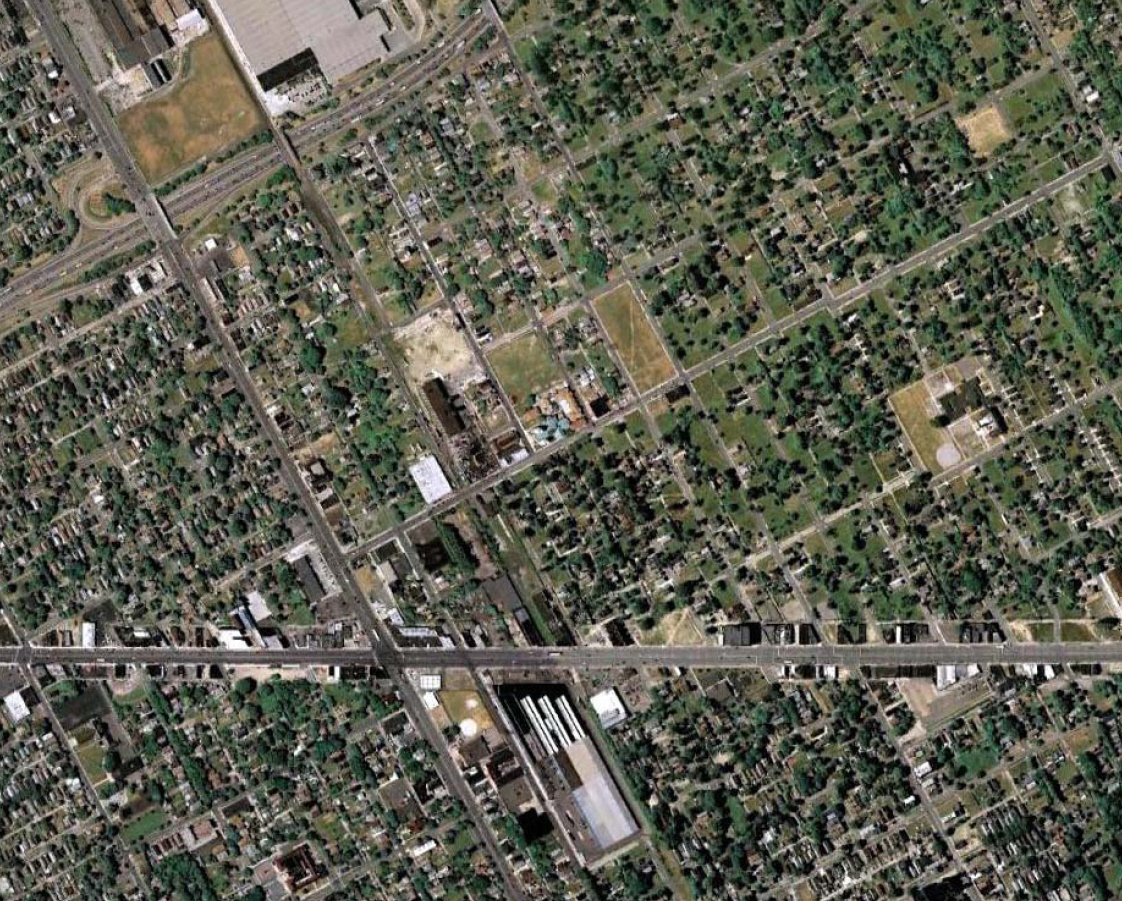Designing smart cities
Contents |
[edit] Introduction
“The major challenges of the twenty first century include the rapid growth of many cities and the decline of others, the expansion of the informal sector, and the role of cities in causing or mitigating climate change. Evidence from around the world suggests that contemporary urban planning has largely failed to address these challenges.” Global Report on Human Settlements 2009, Planning Sustainable Cities Foreword by Ban Ki-Moon Secretary General, United Nations.
Over half of the planet's population now lives in cities. This figure is predicted to rise to more than 70% by the second half of the century, a figure made even more startling by the fact that the human population will have increased by two billion in the same time-frame.
[edit] Definition
“Smart cities” is defined in PAS 180: 2014 Smart Cities. Vocabulary as '...the effective integration of physical, digital and human systems in the built environment to deliver a sustainable, prosperous and inclusive future for its citizens.'
Smart cities optimise the use of technology in the design and operation of infrastructure and buildings in a way which meets the current and future needs of their citizens. Truly smart cities should be about more than just harnessing technology; they require consideration of governance and growth, urban development and infrastructure, the environment and natural resources, society and community. (Ref Buro Happold:Defining and benchmarking SMART cities)
Some experts believe that the notion of smart cities has been overly driven by hi-tech companies. There are a number of reasons for this:
- The enthusiasm of high-tech companies to identify solutions that their own hardware and software can offer inefficient cities.
- Practitioners (architects, planners and especially engineers) failing to engage properly in the debate. Engineers are singled out here as the profession that historically has held the role of harnessing emergent science and technology to improve the environment.
- A lack of understanding at the municipal leadership level.
Given this situation and the belief by some that the planning, design and construction of future cities requires an integrated approach to achieve successful outcomes, alternative terminology has been suggested. The term 'The Living City' refers to an approach in which technology plays an important but nevertheless supporting role (Ref Buro Happold: The Living City).
The relationship between Smart Cities and the Living City. Image courtesy Buro Happold.
[edit] Background
As communications networks and transport connections make the planet seem ever smaller, city 'nodes' are becoming our economic powerhouses; competing to attract global businesses, skilled employees and eager consumers. The basis of this competition is broad and includes: access to education and jobs, personal safety and security, effective healthcare, efficient transport, an attractive physical environment and vibrant communities.
Cities strive to differentiate themselves, developing brands that emphasise their economic, cultural, physical, and even climatic advantages. Cities can enhance their desirability, and so their economic success, by the efficient design and management of core services and infrastructure as well as by enhancing their physical appearance.
While some cities in this global competition face problems arising from population shrinkage, as residents and businesses are enticed away to find better opportunities elsewhere, many more are growing too rapidly for their infrastructure and services to cope. City authorities are being stretched to breaking point simply meeting basic requirements for clean water, adequate waste treatment and the supply of energy and food.
There is broad agreement that densely populated urban areas should be more sustainable than less concentrated rural settlements. However, while around 50% of the global population lives in cities, they account for more than 75% of the consumption of non-renewable resources, and create around three quarters of global pollution.
Creating successful cities that begin to mitigate some of these impacts is a balance between social, environmental and economic opportunities delivered through smart planning, design and construction, and underpinned by smart technology.
Jeddah 2030 Plan. Image: Happold Consulting
[edit] Governance and Growth
Creating smart cities is a complex, long-term process, and its success depends on a sustained commitment to a clear course of action that involves:
- Unified leadership.
- A clear inspirational vision.
- A set of well-defined strategies and objectives.
- The creation of an appropriate and acceptable governance model.
- The development of a business case and economic appraisals to assess the impacts of development.
- A clear understanding of urban development, transport and infrastructure strategies and regeneration models.
- A thorough grasp of how technology can be integrated across city functions and departments to create new synergies and insights.
- An appreciation of current and emerging best practice in the use of smart systems in services, infrastructure and buildings.
- An appreciation of context and an understanding of the interests of stakeholders, local culture and customs which can have a big influence on what is acceptable.
- An understanding of the ownership, safety, security and use of data as well as funding models for new infrastructure.
Strategies for smart cities should include:
- Clear communication
- A unifying vision through the whole-life cycle.
- Integration with policies and governance structure.
- Clear holistic understanding of how data is transferred and captured between technologies and systems and how it is used by decision makers.
[edit] Urban development and infrastructure
Design teams must operate across the complete project lifecycle, from assessing the physical opportunities and constraints of a site and considering the viability of different development options, to working with planners and developers to design and build the best solution.
From urban regeneration projects to creating new cities, an integrated, multi-disciplinary approach is required to ensure that all aspects of civil engineering and environmental planning are covered:
- Ground conditions.
- Flood risk.
- Energy.
- Utilities infrastructure and strategies.
- Waste infrastructure and strategies.
- Transport and access.
- Assessments of environmental impacts, and how they can be minimised.
At present, many smart systems, or smart grids linked to infrastructure, operate in functional silos, with their own specific hardware and software, operated by companies with specialist knowledge of that particular field. Each system has its own dedicated controls and networks of sensors.
Ideally a single, 'smart', shared control system would not only avoid duplication – with significant cost savings – but also provide a far richer picture of what is happening; enabling more informed decision-making and more rapid deployment of measures to deal with emerging situations. This concept has given rise to the notion of an 'urban operating system' (ref Living PlanIT: Urban Operating System), something akin to the operating systems utilised by the computer industry and involving a layer of 'middleware' which sits between the city infrastructure 'hardware' and the operational 'software' controls and (in the future) City Apps.
There are a number of problems associated with the integration of individual functionally-focused systems, including the lack of common interfaces and operating systems and the ability to cope with the vast amount of data generated. However, technology businesses are alive to the potential and a number are attempting to develop integrated city or urban operating systems that aim to take advantage of enhanced, intelligent, machine-2-machine connectivity. It is clear that open IT architecture with standard interface protocols and the ability to plug 'n' play new applications and hardware will make it much easier to link systems as well as opening the market to new entrants with valuable fresh thinking.
At present there are still very few working examples of city-wide smart ICT approaches. But despite this, advances in ICT are already making a significant contribution to city efficiency, including; traffic management, building and campus management systems and the provision of utilities.
[edit] Environment and natural resources
Natural resources are being depleted at an alarming rate. The arrival of 'peak oil', which some say is imminent, will push the costs of fuel and other carbon-based products to much higher levels, increasing transport costs, damaging existing logistics chains and economic models and preventing developing countries from achieving levels of prosperity and opportunity comparable to the developed countries.
At the same time, the exploitation of the remaining oil stocks means that carbon dioxide and other greenhouse gases will continue to be pumped into the atmosphere. The damage to the earth's atmosphere that these emissions are causing has been demonstrated by the increasing volatility of weather patterns causing droughts, floods, unseasonal temperature changes and great ranges of wind speeds. Some authorities suggest that managing the global average temperature rise to less than two degrees is already a lost cause (red Doha Climate Change Conference - November 2012).
It is incumbent on all those working in the built environment to stop this spiral of resource depletion and waste production and to begin to repair some of the damage:
- Identifying approaches to urban development that reduce resource inputs and reduce waste outputs.
- Designing buildings and neighbourhoods that consume fewer resources.
- Optimising generation processes and distribution networks.
- Introducing renewable energy sources.
- Designing buildings and neighbourhoods to re-use or recycle the by-products of heat and recycle water.
- Using smart technology to create efficient buildings.
- Adopting Integrated Systems Engineering.
- Ensuring demand and supply side matching.
Greater environmental efficiencies and a more sustainable approach may be achieved by adopting development in a more consistent manner. One such initiative entitled 'Mean Lean Green', is designed to establish a cost effective and logical process to improve the sustainability of development and to begin to achieve meaningful reductions in carbon and water footprints.
To be fully effective, any such approach requires more work in a number of key areas and a broader framework to operate within. Whether it is compliance with good development policy or self-regulation to achieve corporate governance targets, there is a need to monitor actual outputs, encourage ongoing improvements and adjust behaviours. At each point in this integrated approach, there is the opportunity to introduce technologies in key enabling roles – in sensing, monitoring, data storage, control and management, in analysis, self learning and through machine-to-machine interfaces.
[edit] Society and community
Already 3.5 billion people – that is 50% of the global population - live in cities, and that figure is set to rise by a further two to two-and-a-half billion over the next 25 years. To accommodate these numbers, we will need to build ten cities the size of London every year.
The primary driver for this 'urbanisation' is economic opportunity, but there are other factors at play, including:
- Access to better education.
- Access to health facilities.
- Greater communal safety.
- Greater individual self-expression.
- Improved accessibility.
- Improved mobility.
While the move to cities may be thought to improve the personal situations of those moving, it can place great stresses on other individuals, their communities and the wider society. This can be seen in the growing gap between the wealthy and the poor, by the growth of ghettos and shanty towns, by marginalisation of individuals and groups, by lower levels of educational attainment, and by the increase in many urban areas of crime, disease, and mortality rates.
Cities must aspire to broaden access to lifestyles that provide a common level of education, training and employment, to improve the quality of the environment and so improve health and well-being, and to provide safety and security.
It is also important to capture the benefits of urban living, where scale and density should make it easier to deliver smart, technology-based progress, and share them with more isolated communities. In the field of education, free software in open-source format and free, online tutorials are already giving wider access quality teaching and delivering higher standards.
The focus on design to improve mobility is achieving significant and necessary improvements in lifestyles and health. The growth in access to data and improved communications will also provide the opportunity for citizens to interact with one and another with more efficiency and will establish greater transparency between them and those who manage cities on their behalf.
[edit] Looking forward
Urbanisation presents something of a dichotomy – the city should be the most sustainable model for large human populations, and yet cities account for three-quarters of the global carbon footprint. With climate change threatening many cities through rising sea levels, increasingly volatile weather patterns and diminishing resources, the governments of both developed and developing countries face the demand not only for improved social conditions and better economic prospects, but also, greater resilience and more environmentally-sound city forms.
The need to ensure that cities are sustainable, energy efficient and low impact is placing increasing emphasis on the provision of accurate, accountable and objective professional advice. There is a need to create 'layers of smartness', not just resource efficiency but health, economic stability, a sense of shared community and an ability to adapt to future challenges. And beyond this, to link these layers to harness data to enhance efficiencies of city operations and urban living even more.
The smart city approach ranges from a complete city solution covering infrastructure, transport, governance, business, economic and land use planning and digital masterplanning to individual projects whether building, campus, district or public realm. The common thread is an acute understanding of how professional services are interrelated, bringing them together to work most effectively whilst at the same time creating greater opportunity for efficiencies through the application of technology.
Capital costs and return on investment will become increasingly important aspects of decision making in city governance. Quantifying the revenue generated by infrastructure starts to adjust the economics of investment choices and has the potential to bring about a major step change in city performance. A great example of this is the High Line project in New York where one project has transformed a blighted area of the city and has been the catalyst for $2bn of private investment, adding thousands of new residential units, thousands of new jobs, a thousand new hotel rooms, new restaurants, galleries and shops.
Whilst this begins to hint at a new way of approaching urban development, there are a number of challenges that need to be addressed if genuine progress is to be made:
- What types of governance models are appropriate for smart cities and how do you measure their success?
- Who funds the investment required to enable smart cities to be created and how does the funder derive returns on that investment?
- What guarantees are there for the security and safety of smart networks?
- How do we use an integrated systems approach to deliver the most from smart grids?
- Who owns the data accumulated by smart grids and networks?
- How do systems adapt to the vagaries of human behaviour and still deliver the promise of very high efficiencies?
Urbanisation is happening at an unprecedented rate and will affect us all no matter where we live. If we collaborate, and view these challenges as opportunities, smart city solutions may offer us a way forward.
This article was created by --Buro Happold 19/2/2013
A note from the authors:
Smart Cities is an arena of topicality and no little importance. With the demographic shifts taking place globally, the impact of climate change and the volatility of resource demand and production, the need for a focus on the planning, design and delivery of sustainable urban development has never been so great. The appropriate application of emerging technologies offers some hope of achieving greater efficiencies in the way cities operate and citizens live their lives. But too often the focus of the debate is lost. Technology and 'smartness' needs to be taken in context – they are another layer to help improve the sustainability of projects, not the answer in themselves. Buro Happold takes the position that first and foremost, urban development needs skilled and experienced teams to promote an effective business case allied to first class planning and design as a prerequisite to creating successful urban space. We call this approach The Living City.
- Andrew Comer , Partner and Director of Environment+Infrastructure, Buro Happold ([email protected])
- Robert Moyser , Associate Director, Environment+Infrastructure, Buro Happold ([email protected])
[edit] Related articles on Designing Buildings
- Chief digital officer CDO
- Better infrastructure will lead us to a better future.
- Cities as systems - BRE Solutions for urban environments.
- Compact sustainable city.
- Connectivity.
- Contemporary Cartography exhibition.
- Engineering Smart Cities.
- European connected and smart home market.
- Global smart cities market.
- How can cities become more resilient?
- Integrated transport system.
- Internet of things.
- Masterplanning.
- Measuring the success of smart cities.
- Open data.
- Parking reservation systems.
- PAS 180:2014 Smart cities – Vocabulary.
- PAS 181:2014 Smart city Framework. Guide to establishing strategies for smart.
- PAS 182 Smart city data concept model.
- Roll-out of full fibre broadband in the UK.
- Smart airports.
- Smart buildings.
- Smart cities - is small to medium beautiful?
- Smart cities design timeframe.
- Smart cities need to find some smarter answers.
- Smart village trials autonomous shuttle and private mobile network.
- Smart construction.
- Smart technology.
- Sustaining walking and cycling measures after COVID-19.
- The Living City: Rethinking our role in the Digital Age.
- The Smart building in the smart city.
- Three key ingredients for designing inclusive walking and cycling infrastructure.
- Tokyo.
- Types of city.
- UK Digital Strategy.
- What should be in the second cycling and walking investment strategy?
[edit] External references
- Living PlanIT: Urban Operating System
- Buro Happold: The Living City.
- Global Report on Human Settlements 2009, Planning Sustainable Cities Foreword by Ban Ki-Moon Secretary General, United Nations.
- Doha Climate Change Conference - November 2012.
- High Line project in New York.
- YouTube: Urbanisation.
- Buro Happold: Defining and benchmarking SMART cities.
- The Edge Debate: How scary is smart?
- Buro Happold: The Living City; systems methodology. 2013.
- International Resource Panel. The Weight of Cities: Resource Requirements of Future Urbanization; United Nations Environment Programme: Nairobi, Kenya, 2018.
BIM Directory
[edit] Building Information Modelling (BIM)
[edit] Information Requirements
Employer's Information Requirements (EIR)
Organisational Information Requirements (OIR)
Asset Information Requirements (AIR)
[edit] Information Models
Project Information Model (PIM)
[edit] Collaborative Practices
Industry Foundation Classes (IFC)











Comments
To make a comment about this article, click 'Add a comment' above. Separate your comments from any existing comments by inserting a horizontal line.